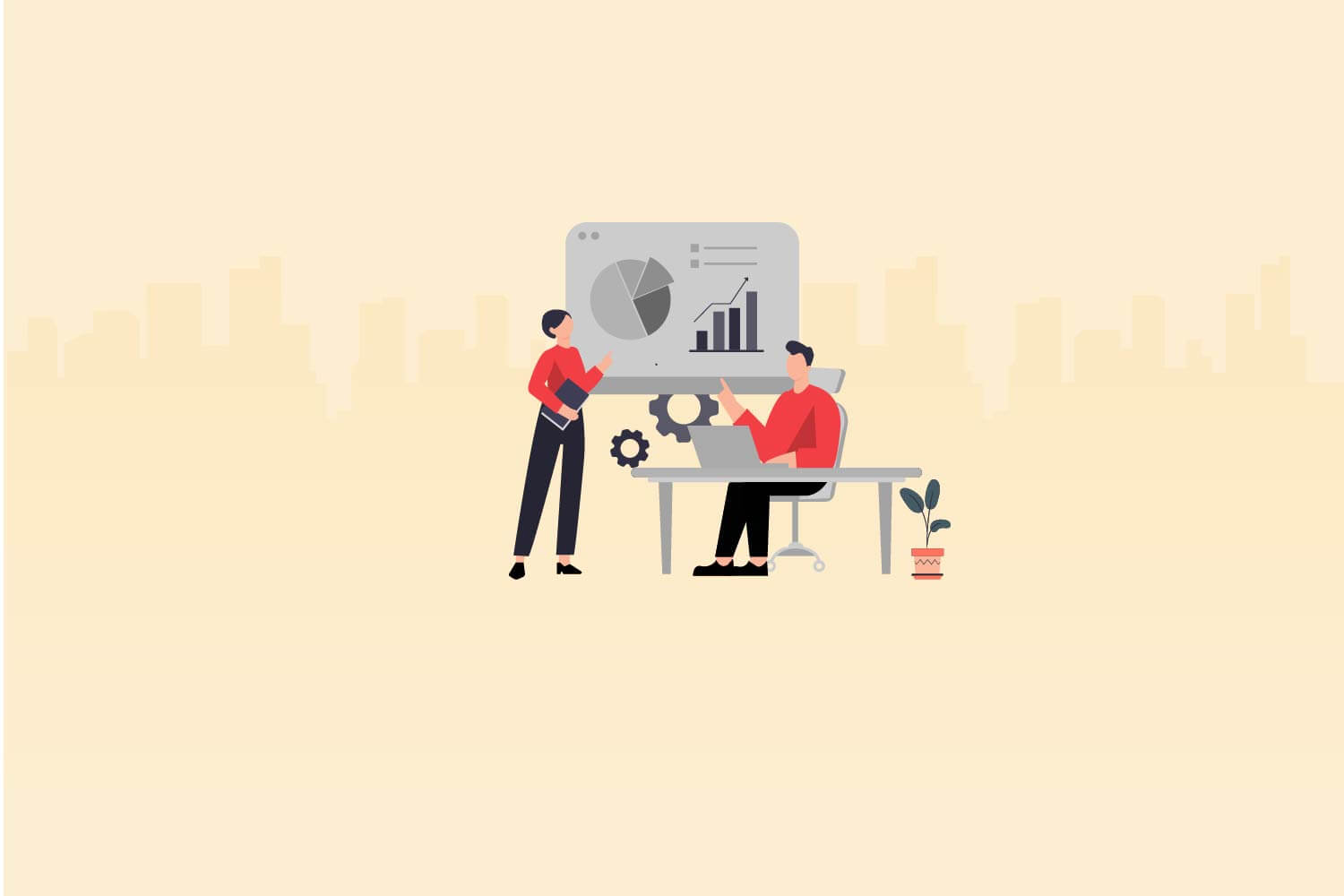In today’s dynamic and competitive business landscape, the success of an organization hinges on its ability to adapt, evolve, and meet the demands of the market. At the heart of this endeavor lies an often underestimated yet crucial aspect: the workforce. Implementing an effective workforce plan is more than just a strategic move; it’s a vital tool that empowers businesses to align their human resources with their goals, maximize efficiency, and stay ahead in the race.
According to a study, effective implementation of workforce plans can lead to a 20% reduction in time-to-fill job vacancies and a 25% increase in the speed of decision-making.
In this guide, we will delve into the essential steps that go into crafting and executing a strong workforce plan. From assessing current capabilities to envisioning future needs, we’ll explore the strategies that drive success and help businesses thrive in an ever-changing environment.
Assessing current workforce
In the intricate tapestry of organizational success, every thread represents a member of the workforce. The foundation of a robust workforce plan begins with a deep dive into the existing composition of talent within the company. This step serves as a compass, guiding businesses toward their strategic goals by understanding their present capabilities.
This assessment involves more than just tallying the number of employees. It’s about comprehending the intricate web of skills, experiences, roles, and performance metrics that collectively determine the company’s competitive edge. By peering into this mosaic, businesses gain insights into their strengths and limitations, helping them chart a course for future growth.
Evaluating employee performance and engagement is a cornerstone of this process. Recognizing who drives innovation, exhibits leadership, and consistently meets targets helps identify potential leaders and areas that require development. Equally crucial is understanding employee satisfaction and engagement levels, as a motivated workforce is more likely to contribute to an organization’s long-term success.
Furthermore, this assessment isn’t confined to existing skills alone. It involves a holistic exploration of employee potentials, interests, and untapped abilities. By appreciating the individual stories and aspirations of each team member, businesses can unearth hidden gems that could be pivotal in times of change.
Assessing the current workforce isn’t just an exercise; it’s an investment in understanding the human capital that drives an organization. By knowing the strengths and areas of improvement, businesses can move forward with a clearer perspective, confident in their ability to strategically shape their workforce for the challenges and opportunities that lie ahead.
Defining future needs and goals

This stage involves a comprehensive evaluation of the company’s long-term objectives and its role within the broader industry ecosystem. It’s a process that demands careful analysis of market trends, technological advancements, and emerging customer preferences. By painting a clear picture of the company’s future landscape, this assessment helps businesses align their workforce strategies with their overarching goals.
Identifying the required skill sets for future success is a critical facet of this phase. As industries shift and technologies evolve, certain competencies become increasingly valuable. Whether it’s adapting to digital transformations, embracing data analytics, or fostering creativity and adaptability, understanding the skills that will be in demand allows businesses to proactively nurture and acquire them.
Moreover, defining future needs goes beyond skills alone. It involves recognizing potential gaps in leadership, diversity and inclusion and other areas that could impact the organization’s resilience and adaptability. By acknowledging these areas, businesses can preemptively develop strategies to bridge skill gaps and build a more well-rounded workforce.
By anticipating the challenges and opportunities that lie ahead, organizations can create a workforce that is not only well-prepared but also poised to lead in an ever-changing world. This process empowers businesses to shape their workforce in a way that is agile, adaptable, and primed for success, setting the stage for a thriving future.
Bridging the divide between present and future
As an organization journeys from its present state to its envisioned future, a crucial checkpoint emerges: the gap analysis. Gap Analysis serves as the bridge that connects the current workforce landscape with the anticipated requirements of tomorrow.
Gap analysis is more than just identifying discrepancies; it’s about understanding the terrain that must be traversed to achieve the desired outcome. This phase involves a meticulous comparison between the existing capabilities of the workforce and the skills and competencies that will be necessary for future success.
This process requires a discerning eye to pinpoint the gaps that could hinder progress. By identifying these gaps, businesses can set the stage for strategic interventions. This might involve targeted training programs, external recruitment efforts, or internal development initiatives aimed at closing the chasm between the present and the future.
It’s worth noting that gap analysis extends beyond skills alone. It delves into aspects like the alignment of organizational culture, the readiness for technological shifts, and the resilience to market fluctuations. These intangible factors play a vital role in ensuring that the workforce is not only equipped with the right abilities but also possesses the mindset to navigate the challenges that lie ahead.
Ultimately, gap analysis is about transformation. It’s about taking a clear-eyed look at where the organization stands today, identifying the areas that need bolstering, and crafting a tailored roadmap to propel the workforce toward the envisioned future. By engaging in this process, businesses embrace change as an opportunity and set the stage for a workforce that’s both adaptable and aligned with the dynamic demands of tomorrow.
Recruitment and training strategies
In the intricate choreography of workforce planning, recruitment and training strategies goes beyond mere hiring and training. This is the pivotal moment where businesses strategically orchestrate the acquisition and cultivation of talent, ensuring they have the right team to tackle the challenges of the future.
Recruitment strategies take on a new dimension in the context of workforce planning. It’s not just about filling vacant positions; it’s about identifying individuals who possess the skills and qualities that align with the organization’s long-term goals. This involves targeted recruitment efforts aimed at attracting candidates who exhibit the desired competencies and align with the company’s values.
Equally important is the training aspect. As industries evolve, the skills landscape shifts, and organizations must proactively prepare their workforce. This involves a blend of upskilling, reskilling, and continuous learning initiatives that keep employees’ abilities relevant and aligned with the demands of a dynamic world.
Furthermore, collaboration between HR, recruitment teams, and training departments is paramount during this phase. The synergy between these functions ensures that recruitment strategies are closely aligned with the training programs, optimizing the development of talent and fostering a culture of growth.
Recruitment and training strategies are the threads that weave together the fabric of an adaptable and skilled workforce. By thoughtfully selecting and nurturing talent, businesses set the stage for a team that’s not only equipped to meet the challenges of tomorrow but also motivated to embark on a journey of continuous improvement. This phase is an investment in the workforce that transcends transactional recruitment and training, forming a robust foundation for sustained success.
Ensuring leadership continuity and expertise

Succession planning isn’t confined to replacing top executives; it encompasses identifying and nurturing individuals across all levels who have the potential to step into key roles in the future. This process involves recognizing those who exhibit not only the necessary skills but also the strategic mindset and cultural alignment that characterize effective leadership.
The cornerstone of succession planning is the cultivation of a pipeline of talent. High-potential employees are identified and provided with opportunities for growth, mentorship, and exposure to different facets of the organization. This preparation doesn’t happen overnight; it’s a deliberate process that requires ongoing attention and investment.
Furthermore, succession planning isn’t a unidirectional process. It’s not just about grooming successors for existing roles; it’s about fostering a culture of leadership development. By nurturing individuals who can adapt and take the reins in various scenarios, businesses build a leadership bench that’s versatile and resilient.
Succession planning also involves addressing potential gaps in expertise. Critical roles often hold specialized knowledge that’s essential for the organization’s functioning. By identifying and preparing individuals who can carry on this expertise, businesses safeguard against the loss of critical knowledge due to retirements or unexpected departures.
Succession planning transcends individual appointments; it’s about securing an organization’s future by nurturing a pool of adaptable leaders. By investing in succession planning, businesses ensure that the threads of leadership and expertise are woven seamlessly into the fabric of their workforce, safeguarding against disruptions and positioning themselves for sustained success.
Monitoring and adaptation
Regular monitoring is essential to gauge the effectiveness of the strategies put in place. It involves tracking key performance indicators, employee engagement levels, and the overall impact of the workforce plan on the organization’s objectives. This data-driven approach provides insights into what’s working well and where adjustments might be needed.
Adaptation is the natural consequence of monitoring. As businesses gather information about the workforce’s performance, engagement, and the broader business landscape, they can fine-tune their strategies. This might involve recalibrating training programs, revisiting recruitment strategies, or redefining leadership development initiatives to better match the ever-changing environment.
Moreover, seeking feedback from employees is a crucial component of this phase. Employees are on the front lines, experiencing the workforce plan in action. Their insights can uncover nuances, pain points, and opportunities for improvement that might otherwise go unnoticed.
The beauty of the monitoring and adaptation phase lies in its iterative nature. It’s a continuous loop of evaluation, adjustment, and improvement that ensures the workforce plan remains relevant and effective. This ongoing commitment to refinement embodies an organization’s dedication to the long-term success of its workforce.
In conclusion, the journey of implementing a workforce plan isn’t a static one; it’s a dynamic process that demands vigilance and adaptability. By embracing monitoring and adaptation, businesses demonstrate their commitment to the ongoing development of their workforce and their readiness to face the challenges of an ever-evolving business landscape.
Conclusion
In a world where change is the only constant, a well-executed workforce plan emerges as a beacon of stability and progress for businesses. As we conclude our journey through the key steps of implementing such a plan, it’s evident that the benefits are manifold. A strategically aligned workforce not only ensures that the right people are in the right roles but also creates a culture of adaptability and growth.
By assessing, planning, and developing their workforce, organizations can future-proof themselves against uncertainties and position themselves as leaders in their industries. As you embark on this journey, remember that a workforce plan isn’t a one-time endeavour; it’s a dynamic process that requires continuous evaluation, adaptation, and refinement. By investing in your workforce today, you’re setting the stage for a stronger, more resilient, and prosperous tomorrow.
Testlify offers a range of assessments and challenges that allow you to gauge candidates’ knowledge, problem-solving skills, and creativity in real-world scenarios. With our extensive test library, you can objectively evaluate candidates’ abilities, ensuring you shortlist the most talented individuals efficiently. Ready to unlock the potential of your hiring process with our talent assessment tool? Book a free 30-minute live demo with Testlify. Our expert team will guide you through the platform, showcasing relevant skill tests tailored to your organization’s needs. With our support, you can streamline candidate selection, saving valuable time and resources.








